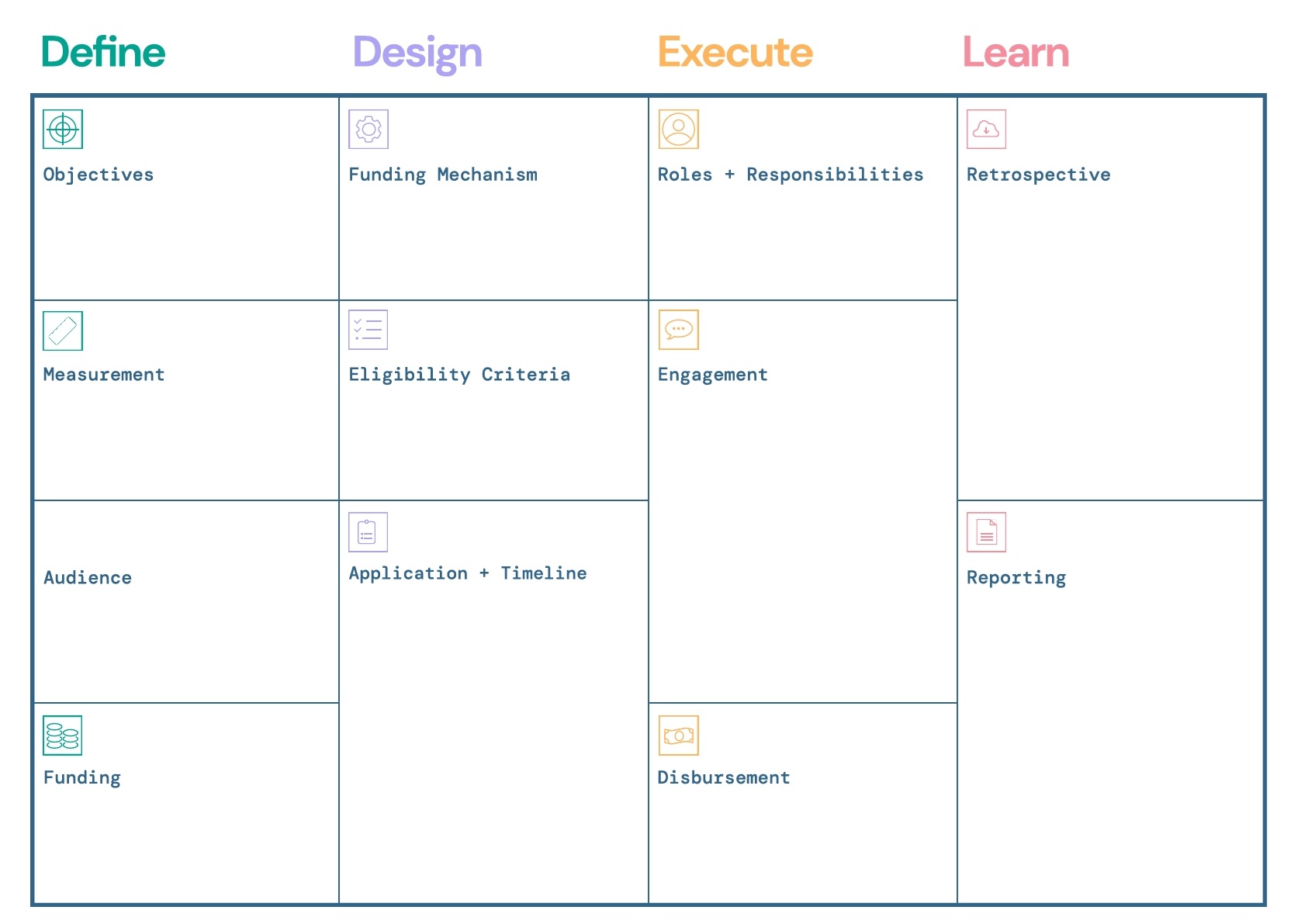Painting Ecosystem Success? Gitcoin Launches Grants Program Canvas
Tereza Bizkova offers her exclusive analysis on the latest release from Gitcoin.
By Tereza Bizkova | June 24th, 2024

If you’re a Web3 project, chances are grants have been a key part of your growth journey. And, if your project evolved into an ecosystem—whether a local community, a blockchain protocol, or an open collective—you’ve probably given out grants to support this evolution.
In short, grants (financial incentives encouraging development, research, and community building) have been vital for fostering richer, healthier, and more diverse ecosystems.
Despite their prominence, running a successful grant program remains a feat. “Grants have been extremely nebulous,” says Jonathan Miller, Chief of Staff - Ecosystem Collective at Gitcoin, explaining how the deeper he explored the grants-giving process, the more complex it appeared.
To address this, Gitcoin, an organization that has distributed over $60 million to date, has condensed research as well as the best practices from its own rounds into the Grants Canvas. The free resource is designed to democratize grantmaking and support everyone in advancing their grants journey. So, what is it all about?
Starting a Grant Can Feel Like Staring at a Blank Canvas
Processing the learnings from Gitcoin’s own grant-giving via Citizen Rounds, reading through governance forums, and conducting interviews, Jonathan had the idea to create the Grants Canvas, a detailed playbook designed to support growth leads with a structured, visual approach to grants program design. This playbook is accompanied by a guide, providing more context on efficient grant program creation.
Kevin Owocki, Co-Founder of Gitcoin, commented, “After running 20 successful rounds of Gitcoin Grants and empowering some of the largest grants programs in Web3, we've done the work to curate our learnings into a powerful suite of tools.”
Inspired by the Business Model Canvas, the Grants Program Canvas offers an accessible framework for visualizing, assessing, and refining grant ideas. For example, Jonathan saw that most grant program objectives were poorly defined, often confused with mission statements, and lacking clarity. That’s why a section of the Canvas offers a deep dive into setting precise objectives and steps to design a successful grants program.
The Canvas can be applied to a wide range of grant programs, both web2 and Web3. “In one hour, you can put together a well-thought-out grants program,” Jonathan claims. It’s structured so you can move through it in order, minimizing the need to backtrack. This makes designing a grants program easier and faster, ensuring no key details are missed.
The Four Stages of Grantmaking
The Canvas is divided into four main stages: Define, Design, Execute, and Learn.

Here’s how each stage is structured:
Define
-
Objectives - Establish clear goals and outcomes that the grants program aims to achieve.
-
Engagement - Outline how stakeholders will be involved and kept informed throughout the program.
-
Audience - Identify the target groups who will benefit from or be involved in the program.
Design
-
Eligibility Criteria - Set the standards and requirements applicants must meet to qualify for funding.
-
Application + Timeline - Detail the application process and the schedule for submission, review, and awarding of grants.
-
Roles + Responsibilities - Define the roles of team members and stakeholders, detailing their responsibilities.
Execute
-
Funding Mechanism - Describe how funds will be allocated and distributed to grant recipients.
-
Funding Disbursement - Outline the process and schedule for disbursing funds to approved projects.
-
Measurement - Develop metrics and methods for assessing the progress and impact of funded projects.
Learn
-
Reporting - Establish requirements for ongoing reporting from grant recipients to track progress and outcomes.
-
Retrospective - Conduct reviews and evaluations to learn from the grant cycle and improve future rounds.
Canvas + ReFi = 🚀?
Today, more and more Web3 regenerative finance (ReFi) projects are getting involved in grantmaking, such as ReFi Phangan running a local quadratic funding (QF) round or projects like Glo Dollar sponsoring matching pools on Giveth and beyond.
This trend is driven by the need to efficiently funnel funds into the community, which not only supports ecosystem sustainability but helps uncover and prioritize what a community values the most (especially with quadratic or retroactive funding). Ultimately, transparent and democratic systems for managing wealth within a community are fundamental to maintaining trust and balance within the ecosystem.
In this sense, the Canvas can potentially become a guiding tool, helping projects make the right grant design decisions. So, rather than impulsively saying, "Let's do QF!", it helps pose critical questions like "What are we looking to reward?", "How mature is our ecosystem?", and "What amount of funding do we have?" to ensure meaningful experiences for grantees and effective results for the ecosystem.
The Web3 ecosystem thrives on innovation but often lacks structured, strategic guidance. It’s not rare to see projects repeat the same mistakes. That’s why the Canvas is a welcome resource; as more projects adopt it, we could see a new type of grantmaking—one that sets new benchmarks for transparency, efficiency, and effectiveness in resource allocation, ultimately fostering more sustainable and impactful ecosystems.
Will you be leveraging the Grants Canvas? Share your thoughts and experiences with us on X.
This article represents the opinion of the author(s) and does not necessarily reflect the editorial stance of CARBON Copy.